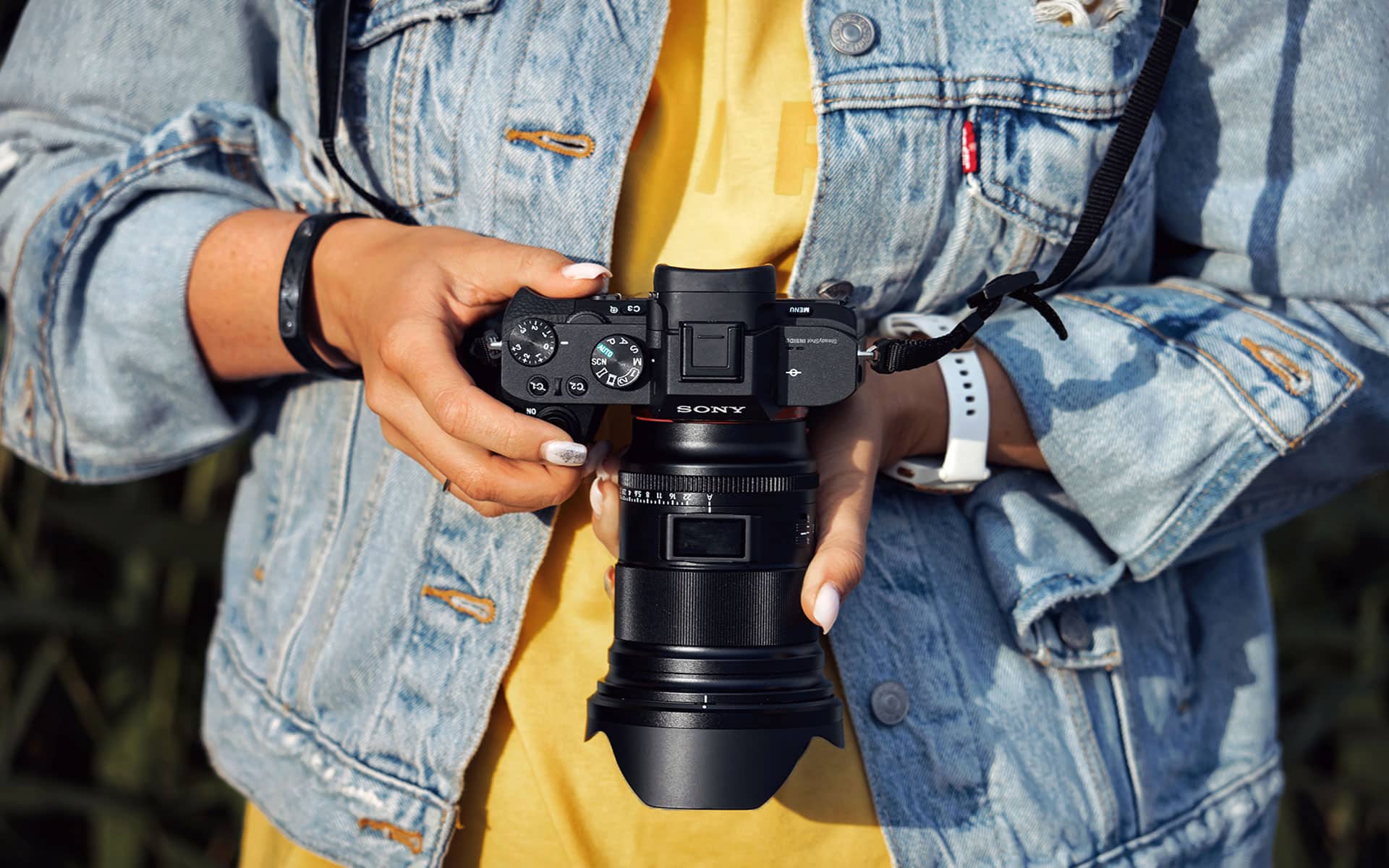16 JAN 2024. The Sony Alpha 7 III, a full-frame mirrorless camera released in 2018, quickly gained popularity among photographers and videographers due to its impressive features and performance
However, as technology continues to advance, it is natural to question whether the Sony Alpha 7 III is still worth it in 2024. In this comprehensive analysis, we will evaluate the camera’s key features, compare it to newer models, discuss its long-term value, and consider the evolving needs of photographers to determine if the Sony Alpha 7 III remains a worthwhile investment.

Sony press release image, Sony Alpha 7 III full-frame camera.
Key features of the Sony Alpha 7 III
- The camera is equipped with a full-frame Exmor R CMOS sensor, boasting a remarkable 24.2-megapixel resolution. This sensor ensures exceptional image quality and performance in low-light conditions.
- The camera features the advanced BIONZ X image processor, which enhances processing speed, reduces noise, and improves overall image quality.
- The camera features an advanced autofocus system consisting of 693 phase-detection points and 425 contrast-detection points. This combination ensures swift and precise subject tracking, enhancing the camera’s overall speed and accuracy.
- The camera effortlessly captures action shots and can shoot continuously at a maximum burst rate of 10 frames per second (fps).
- The In-Body Image Stabilization (IBIS) system in the camera effectively counteracts camera shake, providing stabilization of up to 5 stops. This feature enables clearer and more precise handheld shots.
- The camera allows for 4K video recording with full pixel readout and no pixel binning, resulting in exceptional video footage of superior quality. Additionally, it offers advanced video capabilities, including S-Log3 and Hybrid Log-Gamma (HLG) profiles, catering to the needs of professional videographers.
- The camera is equipped with an NP-FZ100 battery and can capture approximately 710 shots per charge, allowing users to engage in extended shooting sessions without frequent battery changes.
- The camera’s dust and moisture resistance allows for image capture in adverse weather conditions.

Sony press release image, Sony Alpha 7 III full-frame camera.
Comparison with newer models
To evaluate the worth of the Sony Alpha 7 III in 2024, it is crucial to compare it with more recent models that have emerged since its initial launch. The Sony A7R IV and the Sony A7S III are two noteworthy successors to the Sony Alpha 7 III.
The Sony Alpha 7R IV, introduced in 2019, is primarily geared towards high-resolution photography. It features a 61-megapixel sensor, offering significantly higher resolution than the Sony Alpha 7 III. Additionally, it incorporates an improved autofocus system and enhanced image processing capabilities. However, the Sony Alpha 7R IV comes at a higher price point than the Sony Alpha 7 III, making it less accessible to photographers.
The Sony Alpha 7S III, released in 2020, is designed specifically for videography and low-light shooting. It features a 12.1-megapixel sensor with larger pixels, allowing for exceptional low-light performance. The Alpha 7S III also introduces advanced video recording capabilities such as 4K recording at 120 fps and 10-bit 4:2:2 color depth. While it surpasses the Sony Alpha 7 III in terms of video capabilities, its lower resolution may be a limiting factor for photographers who prioritize high-resolution imagery.

Sony press release image, Sony Alpha 7 III full-frame camera.
Long-term value
Despite being released in 2018, the Sony Alpha 7 III image quality remains highly competitive. Its full-frame sensor and image processor deliver excellent dynamic range, low noise, and impressive detail. While newer models may offer higher resolution or specialized features, the Sony Alpha 7 III still produces images of exceptional quality that meet the needs of most photographers.
The Sony Alpha 7 III autofocus system, burst rate, and overall performance remain impressive by today’s standards. The camera’s fast and accurate autofocus, combined with its continuous shooting capabilities, makes it suitable for a wide range of photography genres, including sports and wildlife
The affordability of the Sony Alpha 7 III compared to newer models is one aspect that contributes to its long-term value. As technology advances, newer cameras often come with higher price tags. However, the Sony Alpha 7 III offers a compelling combination of features at a more accessible price point, making it an attractive option for budget-conscious photographers.
The Sony Alpha 7 III is a versatile camera that excels in both photography and videography. Its 4K video capabilities, IBIS system, and robust set of features make it a reliable tool for content creators. Furthermore, its compatibility with a vast array of Sony E-mount lenses provides photographers with a wide range of creative options.

Sony press release image, Sony Alpha 7 III full-frame camera.
Evolving needs of photographers
To determine if the Sony Alpha 7 III is worth it in 2024, it is essential to consider the evolving needs of photographers. While some professionals may require the latest cutting-edge features offered by newer models, many photographers can still achieve their creative vision using the Sony Alpha 7 III capabilities. The Sony Alpha 7 III provides a solid foundation for various photography genres, such as landscape, portrait, street, sport, and event photography. The combination of image quality, autofocus performance, and versatility ensures that it remains relevant even as newer models enter the market. However, photographers should assess their specific needs and consider factors such as resolution requirements, specialized features (e.g., high-speed shooting or extreme low-light capabilities), and budget constraints when deciding if the Sony Alpha 7 III is the right choice for them in 2024.
Discover the excellent Sony Alpha 7 III full-frame camera.
Recommended lenses for Sony Alpha 7 III
When selecting lenses for the Sony Alpha 7 III, it’s essential to consider factors such as the type of photography you engage in, your budget, and the desired quality of images. Here are some top lens recommendations for the Sony Alpha 7 III based on various focal lengths and shooting scenarios:
Wide-Angle zoom lens – Tamron 17-28mm f/2.8 Di III RXD
This Tamron lens offers a versatile zoom range suitable for landscape photography. It features a fast f/2.8 aperture, ideal for low-light conditions and astrophotography. It boasts a minimum focusing distance of 19 cm at 17 mm for detailed close-up shots. Equipped with a rapid extra silent stepping drive (RXD) for smooth and quiet autofocus, it is great for video shooting.
Standard prime lens – Sony FE 50mm f/1.4
A classic “nifty fifty” lens with a natural field of view similar to the human eye. Known for excellent center sharpness and pleasing bokeh due to its wide aperture, its lightweight and compact design makes it versatile for various shooting situations.
Wide prime lens – Sigma 20mm f/2
A fast, ultra-wide prime lens that is smaller and lighter than many zoom alternatives. It features high-quality optics with impressive sharpness across the frame, even at wider apertures. The lens offers responsive and virtually silent autofocus, making it convenient for various shooting scenarios.
Standard zoom lens – SIGMA 24-70mm F2.8 DG DN II Art
An upgraded version designed specifically for Sony full-frame E-mount cameras incorporates advanced optical elements for improved image quality and performance. It excels in sharpness, handling, and overall image quality.
Street photography lens – Sony FE 35mm f/1.8
Ideal for street photography with outstanding sharpness, even at wider apertures. Features weather sealing and a nine-aperture iris for attractive bokeh effects.
Compact prime lens – Sony FE 40mm f/2.5G
Offers exceptional edge-to-edge sharpness in a lightweight package, with fast autofocus performance, making it a reliable choice.
Portrait lens – Sony FE 85mm f/1.8
Balances perspective compression and facial feature accuracy effectively. Provides creamy background bokeh with its fast aperture, suitable for portrait photography.
Macro lens – Sigma 105mm f/2.8 Macro Art
Known for impressive image quality and a robust build suitable for macro photography, it offers genuine 1:1 reproduction ratios with outstanding detail throughout the frame.
Telephoto zoom lens – Sony FE 70-200mm f/4 G OSS
A lighter alternative to the f/2.8 version while maintaining good image quality. Suitable for events, sports, portraits, and other long-range scenarios.
Super-Telephoto zoom lens – Sony FE 200-600mm f/5.6-6.3 G OSS
Provides an extensive focal length range, ideal for wildlife, sports, and action photography. Equipped with optical steady shot features to ensure smooth shots even at longer focal lengths.
These are just some of the recommended lenses for the Sony Alpha 7 III. There is a very wide range of very good lenses available on the market.

















